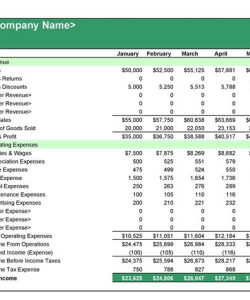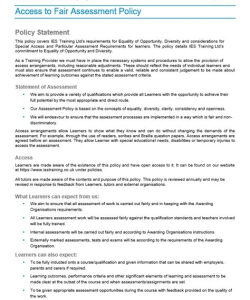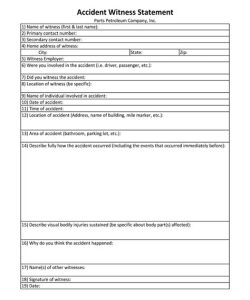When it comes to financial reporting, accuracy and compliance are paramount. The AICPA compiled financial statement template serves as a critical tool for accountants and auditors, ensuring that financial data is presented clearly and in accordance with professional standards. This template not only simplifies the process of compiling financial statements but also instills confidence in stakeholders that the information they’re receiving is reliable and well-structured.
The importance of using an AICPA compiled financial statement template cannot be overstated. For small businesses and non-profit organizations, it provides a framework that aligns with the best practices in financial reporting. It’s designed to help preparers create statements that reflect a true and fair view of an entity’s financial position, without the need for an extensive audit or review.
Adopting the AICPA template ensures consistency across financial periods and comparability with other entities. It’s a resource that promotes transparency and aids in the decision-making process by providing clear insights into financial performance and cash flows. Let’s delve into the specifics of this template and how it can benefit your financial reporting process.
Understanding the AICPA Financial Reporting Framework
The American Institute of Certified Public Accountants (AICPA) has developed a comprehensive framework for financial reporting. This framework is tailored to meet the needs of small and medium-sized entities, providing a cost-effective solution for financial statement preparation. The AICPA framework is not GAAP-compliant; instead, it offers a simplified approach that focuses on the most relevant financial information.
One of the key advantages of the AICPA framework is its flexibility. It allows entities to present financial statements that are more relevant to their specific circumstances, without being bogged down by complex GAAP requirements. This is particularly beneficial for entities that do not need to adhere to GAAP for regulatory or contractual reasons.
The framework emphasizes straightforward financial statement presentation. This means less complexity in note disclosures and a focus on the information that users of financial statements find most useful. It’s a practical approach that reduces the burden of financial reporting while still providing a comprehensive view of an entity’s financial health.
By utilizing the AICPA framework, entities can produce financial statements that are understandable, reliable, and relevant. The framework’s principles-based approach ensures that the financial statements are not only compliant with the AICPA’s guidelines but also accessible to those who rely on them for making informed decisions.
Components of the AICPA Compiled Financial Statement Template
The AICPA compiled financial statement template is a structured document that outlines the necessary components for a complete financial statement. It includes sections for the balance sheet, income statement, statement of cash flows, and notes to the financial statements. Each section is designed to capture the essential financial data required for a comprehensive financial report.
The balance sheet section of the template provides a snapshot of the entity’s financial position at a specific point in time. It lists assets, liabilities, and equity, giving stakeholders a clear picture of what the entity owns and owes. The income statement section details the entity’s revenue and expenses over a period, highlighting profitability.
The statement of cash flows is another crucial component. It tracks the cash entering and leaving the entity, offering insights into its liquidity and cash management. The notes to the financial statements are where additional details and explanations of the figures are provided, adding context and clarity to the reported numbers.
Together, these components form a cohesive financial statement that adheres to the AICPA’s reporting standards. The template ensures that all relevant financial information is included and presented in a manner that is both professional and easy to understand.
Best Practices for Using the AICPA Template
Implementing the AICPA compiled financial statement template in your financial reporting process requires adherence to certain best practices. Firstly, it’s essential to ensure that all financial data entered into the template is accurate and up-to-date. This involves meticulous record-keeping and verification of all figures.
Secondly, understanding the template’s structure and the purpose of each section will aid in the correct placement of financial data. This helps in maintaining the integrity of the financial report and ensures that users can easily find the information they need.
It’s also important to tailor the notes to the financial statements to the specific needs of the entity. While the template provides a general outline, the notes should include detailed explanations of policies, procedures, and any unusual items that may affect the financial statements.
Lastly, regular reviews of the financial statements are crucial. This not only helps in catching any errors or inconsistencies but also provides an opportunity to update the statements with the latest financial data. Consistent reviews contribute to the reliability and accuracy of the financial reports.
In conclusion, the AICPA compiled financial statement template is an invaluable resource for entities looking to present their financial data in a clear, concise, and compliant manner. By following the guidelines and best practices outlined above, entities can leverage this template to enhance their financial reporting and provide stakeholders with the information they need to make informed decisions.
As we wrap up our discussion on the AICPA compiled financial statement template, it’s clear that this tool is more than just a convenience; it’s a necessity for those seeking to maintain high standards in financial reporting. The template’s structured approach and adherence to AICPA guidelines ensure that financial statements are not only accurate but also meaningful to those who rely on them.



